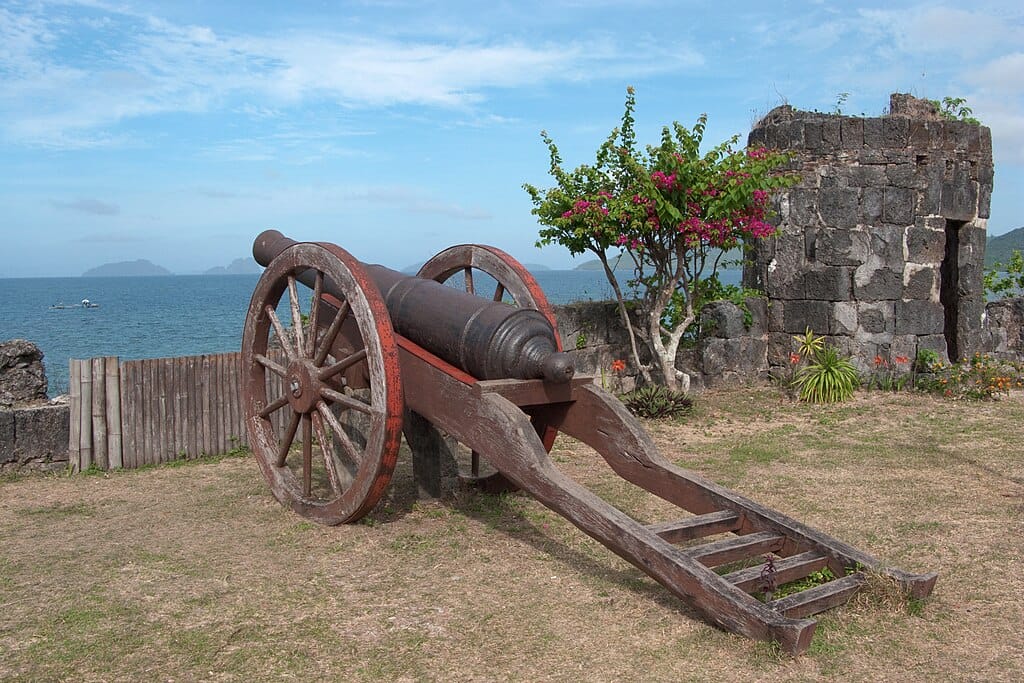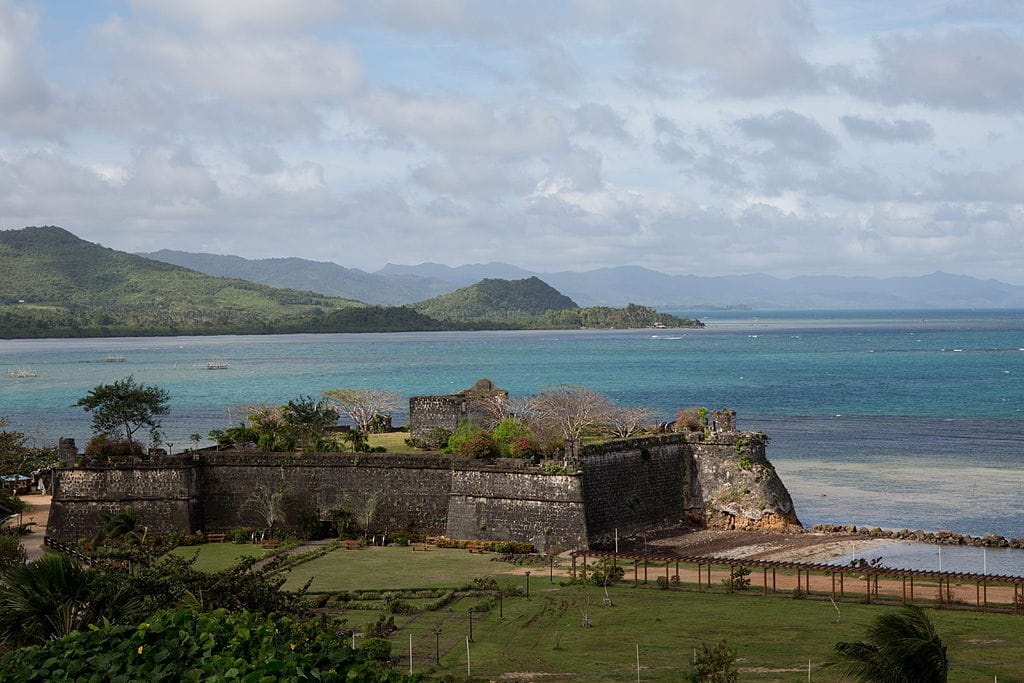
Table of Contents
Introduction
Imagine standing on the ancient stone walls of a Spanish fortress, overlooking the glistening waters of Taytay Bay in Palawan. The sea breeze carries whispers of battles fought, traders arriving from distant lands, and the resilience of a community that has protected its home for centuries. This is Fort Santa Isabel Palawan, a historic Spanish-era fortress that once guarded Palawan’s northern coasts from pirates and invaders.
While history lovers come to witness its well-preserved walls and breathtaking views, adventurers set off from this very location on an unforgettable journey from Coron to El Nido, sailing through some of the best diving Philippines offers. This tour isn’t just about history; it’s about discovering hidden lagoons, snorkeling in vibrant coral gardens, and walking through the remnants of an era long past.
So, if you’re looking for an adventure that blends history, culture, and breathtaking island landscapes, Fort Santa Isabel and the Coron to El Nido route should be at the top of your travel list. Let’s dive into the fascinating past and incredible experiences waiting for you on this journey.
The History of Fort Santa Isabel Palawan
1. A Spanish Stronghold in the Heart of Palawan
Built in 1667 under the command of the Augustinian Recollect friars, Fort Santa Isabel was designed to protect the town of Taytay from Moro raiders and foreign invaders. Originally constructed as a wooden palisade, it was later rebuilt in stone in 1738 to reinforce its defenses.
✔ Strategic Location: Perched on the coastline of Taytay, overlooking the sea routes once traveled by traders and pirates.
✔ Architectural Marvel: Featuring thick stone walls, watchtowers, and a chapel, showcasing Spanish military engineering.
✔ A Witness to History: Served as a military stronghold, a government outpost, and later a historical landmark.
📍 Fun Fact: The cannons that once defended Taytay can still be seen on the fort’s walls today, a silent reminder of Palawan’s turbulent past.
2. The Role of Fort Santa Isabel in Colonial Palawan
During the Spanish colonial period, Fort Santa Isabel played a crucial role in:

✔ Protecting trade routes between Manila and Palawan, ensuring safe passage for merchants.
✔ Defending against pirate raids, which were common in the Sulu Sea.
✔ Serving as a center of administration, helping spread Spanish influence across northern Palawan.
📍 Why It’s Important: Fort Santa Isabel is one of the last remaining Spanish fortresses in the Philippines, preserving a rich legacy of colonial history.
Exploring Fort Santa Isabel and the Coron to El Nido Tour
After exploring the fort’s stone walls, ancient chapel, and panoramic views, your journey doesn’t end here. The real adventure begins when you set sail on the Coron to El Nido tour, navigating through hidden lagoons, shipwrecks, and pristine marine sanctuaries.
1. Must-Visit Stops on the Coron to El Nido Route
✔ Kayangan Lake – Known as the cleanest lake in Asia, surrounded by towering limestone cliffs.
✔ Twin Lagoon – A magical place where saltwater meets freshwater, creating surreal underwater landscapes.
✔ Siete Pecados Marine Park – A snorkeling paradise filled with vibrant coral reefs and tropical fish.
✔ Snake Island – A breathtaking sandbar winding through crystal-clear waters.
📍 Why It’s Special: These destinations blend history, adventure, and nature, making them a must-visit for any traveler in Palawan.
2. Diving and Snorkeling in Historical Waters
The waters surrounding Coron and El Nido hold not only natural wonders but also remnants of history, making them some of the best diving Philippines locations.
✔ WWII Shipwrecks of Coron – Explore sunken Japanese warships from the Battle of Coron Bay (1944).
✔ Coral Gardens of El Nido – Home to some of the most diverse marine life in the world.
✔ Tubbataha Reefs Natural Park – A UNESCO World Heritage Site teeming with sharks, turtles, and massive coral formations.
📍 Unforgettable Moment: Imagine diving through a sunken warship, surrounded by schools of fish, as history and nature intertwine beneath the waves.
Sustainable Tourism: Preserving Palawan’s History and Nature
While exploring Fort Santa Isabel and diving in the Coron to El Nido route, it’s important to travel responsibly and sustainably to protect these historical and natural wonders.
1. Responsible Travel Tips
✔ Respect historical sites – Avoid touching or climbing delicate structures.
✔ Choose eco-friendly tours – Support operators who prioritize marine conservation.
✔ Use reef-safe sunscreen – Prevent harmful chemicals from damaging coral reefs.
📍 Why It Matters: Sustainable tourism ensures that future generations can experience both the historical and natural beauty of Palawan.
2. How Tourism Helps Preserve Fort Santa Isabel
Tourism plays a vital role in preserving Palawan’s historical sites by:
✔ Funding restoration projects for aging structures.
✔ Providing jobs for local communities, from guides to conservation workers.
✔ Raising awareness about Palawan’s rich history, ensuring its stories live on.
📍 Pro Tip: By visiting Fort Santa Isabel and the Coron to El Nido tour, you’re directly contributing to the conservation of history and nature.
Conclusion
The journey through Fort Santa Isabel Palawan and the Coron to El Nido tour is more than just a trip—it’s a connection to history, nature, and adventure. Whether you’re exploring a Spanish fortress, snorkeling in turquoise waters, or diving into sunken WWII ships, every moment is a story waiting to be told.
🌴 Are you ready to explore the past and present of Palawan? Book your Coron to El Nido tour today and discover the magic of Fort Santa Isabel! 🏝️🌊🚢

